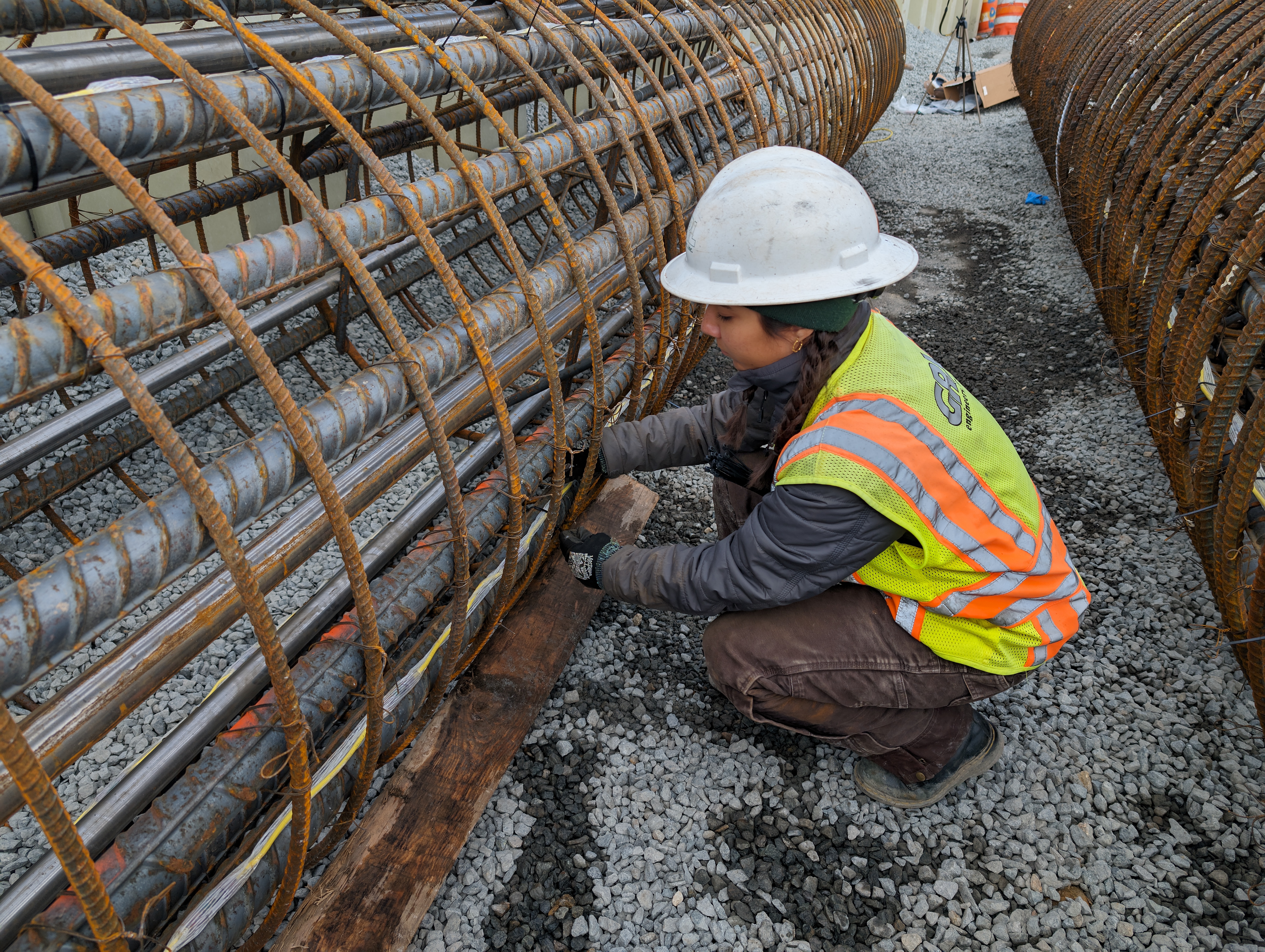The Important Function of Concrete Foundation in Structural Stability and Durability
When it pertains to developing a building, the structure is extra critical than you might assume. Concrete structures provide unmatched strength and durability, ensuring your framework can hold up against numerous ecological obstacles. Without a strong base, you run the risk of prospective issues like shifting or cracking, which can endanger security and value. Understanding the nuances of concrete structures could be the secret to protecting your investment for years ahead. So, what should you take into consideration following?
Understanding the Relevance of Concrete Foundations
Concrete structures are important to the overall security of any type of structure, as they provide the crucial support needed to hold up against different loads and ecological conditions. When you think of building a home or a business area, the structure is the very first point you ought to consider. It works as an obstacle against dampness, securing your home from water damages. A well-placed concrete foundation additionally avoids settling and changing, which can cause cracks in wall surfaces and floors. You'll want to assure that the foundation is properly created and strengthened, as this impacts the long life of your building. Furthermore, a strong foundation can improve power efficiency by minimizing air leaks. Keep in mind, neglecting the significance of a concrete structure can lead to expensive fixings down the line. Investing in a top quality structure upfront is essential for the stability and toughness of your framework.
Benefits of Concrete Foundations for Structural Stability
While lots of variables contribute to a building's structural stability, concrete foundations supply unmatched resilience and strength. You'll appreciate that concrete can endure extreme weather, standing up to both dampness and temperature fluctuations. This resilience means your structure is less most likely to experience cracking or shifting over time, which can compromise its safety.Additionally, concrete's fundamental weight offers a solid base, avoiding motion during natural occasions like quakes or floodings. When you pick a concrete structure, you're likewise choosing for low maintenance; unlike wood, it will not rot or bring in bugs, conserving you time and money in repairs.Moreover, concrete's fire resistance supplies included security, ensuring your structure can sustain heats without substantial damages. Overall, buying a concrete structure implies you're prioritizing the lasting security and stability of your building, making it a sensible choice for any kind of building and construction job.
Common Kinds of Concrete Foundations
When it pertains to building structures, comprehending the common kinds of concrete structures can assist you make informed selections for your job. The most widespread types consist of slab-on-grade, crawl room, and full basement foundations.A slab-on-grade structure is an easy, cost-effective alternative, where a thick concrete slab is put straight on the ground. This type works well in cozy environments, as it minimizes warmth loss.Crawl space structures boost the home somewhat over ground, permitting ventilation and accessibility to pipes and electrical systems. This layout can help protect against moisture issues.Full cellar foundations offer extra living or storage space while supplying excellent architectural assistance. They call for more excavation and are typically made use of in chillier environments to stop frost heave.
Factors to Consider When Creating a Concrete Foundation

Ideal Practices for Installing Concrete Foundations
When you're mounting a concrete structure, proper website prep work is vital to assure security (West Coast General Engineering concrete foundation Rancho Cucamonga). You'll additionally need to understand reinforcement strategies to boost strength and longevity. Finally, don't ignore the treating procedure, as it plays a fundamental role in accomplishing a strong foundation
Site Preparation Significance
Although it may seem straightforward, proper website prep work is important for guaranteeing a solid and long lasting concrete foundation. Begin by removing the area of any kind of debris, vegetation, or natural material that could endanger the structure's honesty. Next, analyze the soil kind and compaction; you may require to excavate or add materials to develop a secure base. Level the ground to assure also weight distribution and avoid resolving concerns in the future. Installing appropriate water drainage systems is likewise important to prevent water build-up, which can damage the structure gradually. Mark out the structure's measurements properly to assist the pouring process. By complying with these actions, you'll set the stage for an effective concrete foundation that stands the test of time.
Support Techniques Described
As soon as the site is appropriately prepared, the following action in ensuring a strong concrete structure involves carrying out reliable reinforcement methods. You must begin by utilizing steel rebar, which offers tensile stamina and aids prevent breaking. Lay the rebar in a grid pattern, seeing to it it rises making use of spacers to maintain proper protection. In addition, take into consideration using cable mesh for additional assistance, specifically in locations based on heavy loads. Don't forget to connect the rebar junctions firmly with wire. For larger foundations, fiber reinforcement can enhance toughness, lowering the threat of contraction cracks. Constantly follow local building ordinance and guidelines to guarantee compliance. By applying these reinforcement methods, you'll substantially enhance your structure's strength and longevity, laying a solid groundwork for your framework.
Healing Process Fundamentals
To ensure your concrete structure treatments effectively, it is necessary to keep adequate dampness and temperature level problems immediately after putting. Begin by covering the surface with a damp cloth or plastic sheet to retain dampness. This maintains the concrete moisturized, stopping fractures and ensuring toughness. You must likewise monitor the temperature level; suitable treating problems are in between 50 ° F and 90 ° F. If it's too warm, mist the surface regularly to stop fast evaporation. For cold weather condition, take into consideration utilizing shielding coverings to preserve heat. Objective for a curing period of at the very least seven days, as this is crucial for optimum strength advancement. By complying with these best practices, you'll boost your foundation's resilience and long life, guaranteeing architectural integrity for years ahead.
Maintenance of Concrete Structures for Durability
To maintain your concrete foundation solid and enduring, normal examinations are crucial. You must additionally ensure reliable drainage remedies are in location to stop water damages. If you spot any type of splits, addressing them quickly will conserve you from larger problems down the line.

Routine Evaluations and Assessments
While normal assessments and evaluations might feel like a duty, they're necessary for preserving the integrity of your concrete structure. By regularly checking for splits, shifts, or signs of wear, you can capture prospective issues prior to they escalate right into expensive repairs. Seek any type of water pooling around the structure or unusual settling, as these can signify underlying issues. It's also a good idea to keep an eye on any adjustments in your home's framework, like doors that stick or windows that do not investigate this site open smoothly. Maintaining a record of your examinations assists track changes over time, permitting proactive upkeep. Ultimately, these analyses ensure your foundation continues to be steady, supporting the durability and safety of your whole framework. Don't forget this important aspect of homeownership!
Efficient Drainage Solutions
Normal evaluations can disclose issues like drain troubles that may compromise your concrete structure's stability. To stop water build-up, assure your seamless gutters and downspouts direct water away from the structure. Installing French drains pipes can efficiently redirect surface area and groundwater, lowering stress on your foundation wall surfaces. Additionally, rating the soil around your home assists assure weblink that water streams away, rather than merging near your foundation.Consider using sump pumps in locations prone to flooding, as they actively get rid of excess water. Frequently look for blockages in water drainage systems and clear them quickly. You'll shield your structure's stability and long life by taking these aggressive measures. Keep in mind, efficient water drainage remedies are essential for maintaining a strong, resilient concrete foundation.
Trigger Fracture Fixes
When you see cracks in your concrete foundation, addressing them quickly is important for maintaining its durability. Little fractures can rapidly develop into bigger issues, compromising the architectural honesty of your home. Consistently evaluate your structure for indicators of damages, such as straight or vertical cracks. If you detect any kind of, do not wait-- repair them instantly. You can use epoxy shots or concrete patching substances, which are efficient for sealing splits. Constantly comply with the manufacturer's guidelines and take into consideration getting in touch with an expert for significant damages. Keep in mind, timely repairs not just improve your structure's durability yet likewise save you cash in the future by preventing a lot more comprehensive repairs down the line. Keep positive, and your foundation will certainly remain solid and protected.
Resolving Typical Issues With Concrete Structures
Concrete foundations can deal with various concerns in time, making it critical to determine and address them immediately. One of one of the most typical problems is fracturing, which can happen as a result of temperature fluctuations or resolving soil. If you discover splits, it's necessary to examine their size and depth; little cracks can usually be sealed, while bigger ones may need professional evaluation.Water breach is an additional major problem. Excess wetness can result in mold and mildew growth and architectural damage. Assurance proper water drainage around your structure to minimize this danger. In addition, search for indicators of shifting or bowing walls, as this can show underlying issues with your structure's stability.Regular examinations are fundamental to catch these issues early. If you detect any concerning indicators, do not hesitate to get in touch with a foundation specialist. By remaining proactive, you can maintain the stability and durability of your concrete foundation, ensuring your home stays safe and safe.
Frequently Asked Questions
How Does Soil Type Impact Concrete Foundation Performance?
Dirt kind substantially impacts concrete foundation performance. If you have actually got expansive clay, as an example, it can create shifting and cracking. Sandy soil might result in working out. Comprehending your dirt aids assure a secure structure.
Can Concrete Foundations Be Fixed if Harmed?
Yes, you can fix damaged concrete structures. Depending on the extent of the damage, techniques like epoxy shot or piece jacking can bring back stability. It's ideal to get in touch with a specialist for efficient services.
What Is the Typical Life-span of a Concrete Structure?
A concrete foundation generally lasts 30 to 100 years, depending on variables like soil conditions, environment, and maintenance. You'll want to watch on it to ensure it remains healthy throughout its lifespan.
Exist Option Materials to Concrete for Foundations?
Yes, there are options to concrete for foundations, like steel, hardwood, or also recycled materials. Each important source alternative has distinct advantages and downsides, so you ought to consider your project's specific needs when choosing the right product.
Just How Does Environment Impact Concrete Structure Resilience?
Environment considerably impacts concrete structure durability (West Coast GE Concrete contractors). Extreme temperature levels, moisture, and freeze-thaw cycles can compromise the product, leading to fractures and architectural concerns. You ought to think about neighborhood climate conditions when preparing your structure to assure long-term performance
 Tatyana Ali Then & Now!
Tatyana Ali Then & Now! Andrea Barber Then & Now!
Andrea Barber Then & Now! Marques Houston Then & Now!
Marques Houston Then & Now! Catherine Bach Then & Now!
Catherine Bach Then & Now! Jeri Ryan Then & Now!
Jeri Ryan Then & Now!